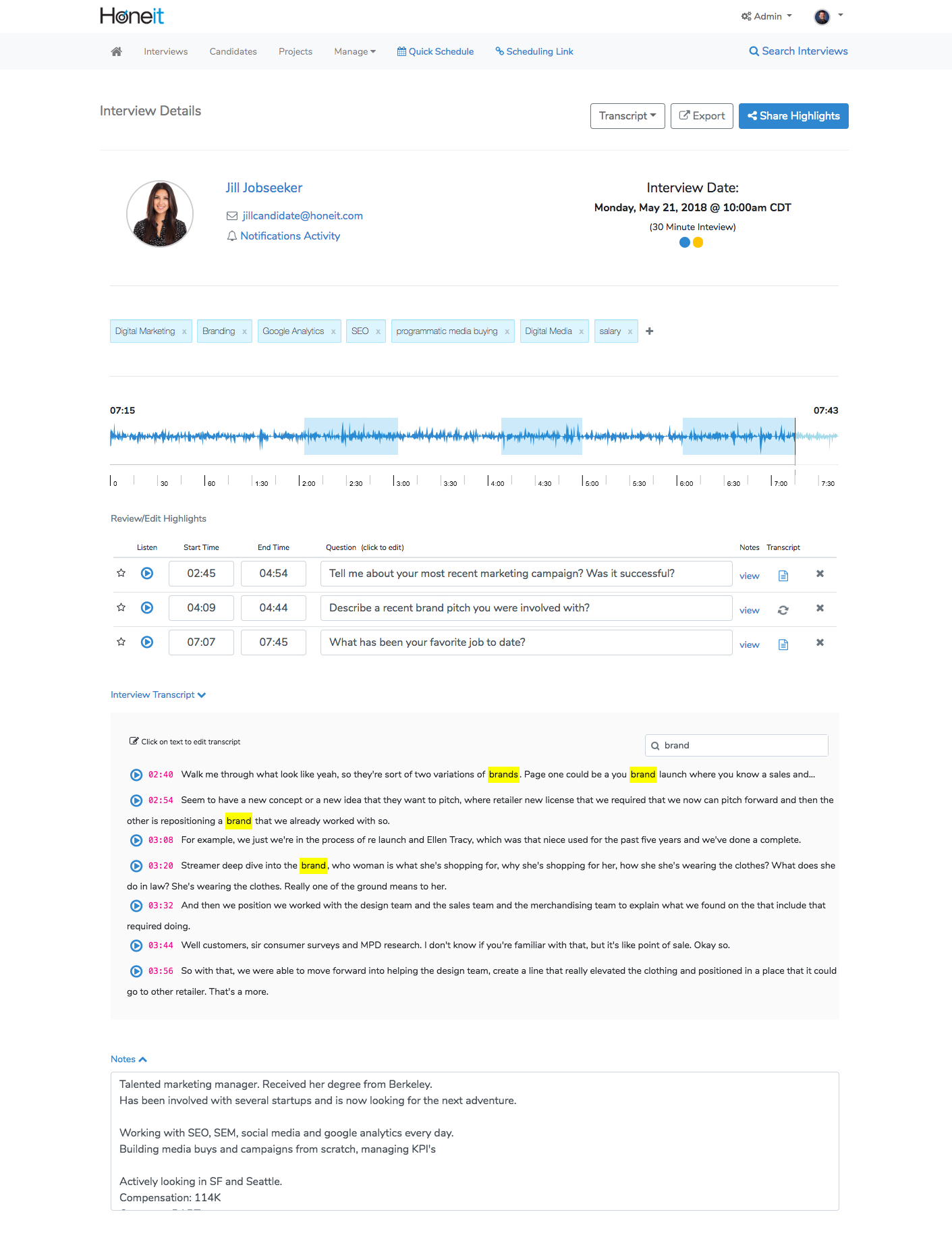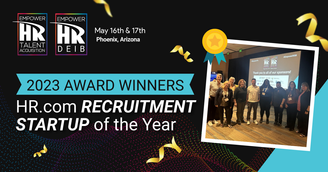Conversation Intelligence: Let’s set this up
Since we started Honeit, we’ve been bullish on “conversation intelligence” for recruiting and hiring.
The easiest way to conceptualize it is this: think of hiring manager intake calls and candidate phone screens as content and actual data. Most people don’t think of phone screens and video interviews as business intelligence. But they definitely are.
Sales orgs already use conversation intelligence.
Here’s a bigger way to illustrate it: there’s a company making waves right now called Gong. A few business publications have predicted they will clear $1B in the next 3-5 years. What they do, as you can learn on this Michael Lewis podcast, is they help salespeople learn where their strengths and weak spots are through data.
In other words, what makes a great salesperson a great salesperson? And what does the data back up?
- How much time does the sales rep speak on a prospect call vs. the prospective client?
- How long does the sales rep spend learning about pain points in the beginning of a call?
- How many times do sales reps say “umm”, “like” or other transitions?
- Are sales reps pitching the company and product on brand?
- Are competitors or substitutes mentioned during the call?
- What’s the best technique and timing to “go for the close”?
- How do the best reps close 10x the average rep?
Managers of sales teams can “rewind the tape”, study Gong reports — as can sales reps — to find ways to improve.
Recruiting usually lags marketing/sales by a few years…
… and that’s evident here too. We don’t really have a “Gong” — or a “Chorus,” another one — for recruiting just yet.
When recruiters say “conversation intelligence,” or “conversational AI” they usually mean “chatbots”, not live or natural conversations among hiring managers, recruiters, sourcers and candidates.
Now, chatbots are good and they have their place. They are great for FAQ answering or screening out high-volume unqualified candidates. Some companies have done well with them in terms of candidate feedback or responding to questions about where a candidate stands in the hiring process. They have a role.
But chatbots are scratching the surface of what’s possible. Gong is getting attention because it’s at the intersection of tech, sales, revenue, and distilling conversations. All are massively important to business and management. Chorus, also linked above, promises that you can “clone your closers.”
But what about in recruiting and hiring?
What makes a great recruiter a great recruiter?
Sometimes in orgs, you’ll see more experienced recruiters mentor or counsel younger ones, but a lot of times, younger ones — and even some mid-career ones — are just thrown to the wolves to pick up the phone with no real training.
- How to interact with hiring managers
- How to open a candidate call
- How to proceed through questions
- How to standardize the calls for easier comparison
- How to take and relay notes
- What are the best interview questions to ask for a job?
- What are the best answers to any given interview question?
- How do your best recruiters pitch the company?
- How do your best hiring managers pitch a job?
- How to reduce or remove individual bias
- Where to go for more context on roles
- Where to go for help with interviewing
We basically toss a lot of recruiters in the deep end, truly. And Gong/Chorus/others are helping with that for sales organizations, so … could Honeit help with that for recruiters? YES!
Read the case study: PeopleLift trained new recruiters to make placements in 3 weeks using Honeit.
Conversation Intelligence for Recruiting and Hiring
Conversations are essential to recruiting and recruiters designed the Honeit platform.
When you keep your conversations, you maintain your value. Almost everything else in recruiting can be automated, but our conversations with hiring managers and candidates create long-lasting relationships. Scribbled notes are no longer sufficient. How a hiring manager describes an open job is chock-full of sourcing and recruiting insights. Similarly, how a candidate describes their experience, or a particular project, speaks volumes and describes in more detail than a bullet point on a resume ever could.
One of the big things we wanted to accomplish was turning conversations into talent intelligence and interview data — so everything goes to the cloud, you can sort by question for hiring manager ease, you don’t have to take notes, and you can listen after the fact and see where you could be better. You could even go over your candidate calls with other recruiters.
It should also be noted that chatbots are a form of automation. One-way video interviews are also a form of automation, but they are not conversations. The more and more that companies embrace automation instead of conversation intelligence and interviews as data, the less and less likely you have a job in 3, 4, 6, 10 years.
That’s not meant as fear — but it is a realistic look at where recruiting could be headed.
So yes, there is a Gong for recruiting and hiring, and it’s right here. And the dream is that conversation intelligence — Keep your conversations, they drive your value — will be the future recruiting, hiring and the interview experience. And never forget, candidates are interviewing your company too!



